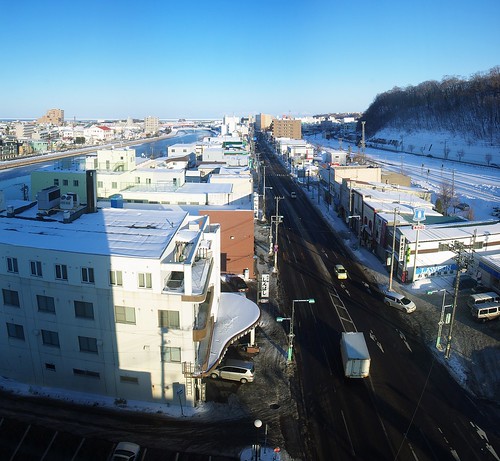 Abashiri, with the river, the main road and the railroad tracks all running towards the sea. Lots more pictures in my Abashiri photoset.
Abashiri, with the river, the main road and the railroad tracks all running towards the sea. Lots more pictures in my Abashiri photoset.Abashiri lies on the northern coast of Hokkaido, along the sea of Okhotsk. As a town it doesn't have all that much to recommend itself. It is about 40000 people strung out along a river valley ending in an industrial area and fishing port out by the sea. Its claim to fame is less than illustrious; Abashiri is mostly known as the site for Japans most famous old high-security prison, and the current maximum-security prison still gives Abashiri occasional media exposure on the news and in crime dramas. The prison at one end of town and the port on the other are the traditional main industries in this city.
But Abashiri is also a travel nexus; it sits on the northern coast facing Russia, with a nearby busy airport and with local railroads that all converge on the town. Any traveler to Akan or Shiretoko national parks will be quite likely to pass through this area. And while the city won't win any beauty contests, there's still the beautiful scenery, the prison museum, the sea tours and the local brewery (making actual Altbier none the less) to keep you happily occupied.
And indeed, there were many tourists around, from Japan and from abroad. Lots of Chinese and Australians, with quite a few other east and south asians sprinkled in (a surprising number of Indians, for instance). I gather there are some direct flights to the airport from those areas for people coming to Hokkaido for the national parks or for the skiing. In fact, the town feels almost like two towns overlaid on one another. One town is a sleepy backwater catering to the traditional industries; local eateries, shops and small businesses supporting the fishing fleet, many of which seem closed for winter (or closed permanently perhaps). The other town is a fairly lively tourist destination with shops and restaurants catering to visitors, and they seemed to be flourishing. Sunday we went to a kaiten-sushi place catering to the locals. Very good, but being a sunday evening there were very few people; perhaps another four guests apart from us, all locals. At the brewery pub and restaurant down the road you could hear a dozen languages spoken and we had to wait for ten minutes for a table. I can't help but wonder if not the future of this city is not going to be connected more to the vagaries of holiday travel trends, rather than the price and availability of fish.
We stayed the first night in a ryokan overlooking the port. The place itself was nice enough - an older building with small traditional tatami rooms, worn but clean - but the reason we chose it is the crab dinner it offers. And it didn't dissapoint: a whole King crab for two people, quickly pressure-cooked in sake and served with various side dishes. It was wonderful; juicy and soft with a truly intense flavour. I don't have a thing for crab the way many Japanese do but this was truly great. The only complaint would be that one whole animal really is too much for two people.
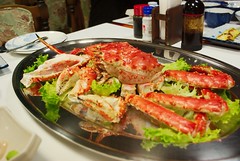
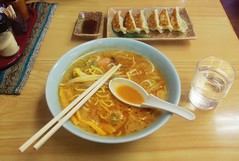
Crab dinner. Delicious. Also, if you're in Hokkaido you need to eat Hokkaido-style ramen; at least, you do if ramen happens to be a favourite food. This is miso ramen, but with some of the greasy tonkotsu soup added for a fuller body.
The next morning we went on a "floating ice tour" on an icebreaker. The north coast is the only place in Japan you get pack ice in the winter. It is a major drawback for the fishing industry; many boats are simply laid up for winter since they can't work in the ice. But the towns along the coast have turned this problem into a major tourist draw, with ice tours, exhibitions and museums. The icebreaker Aurora (they actually have two ships running together) takes tourists out to the ice for photography and general sightseeing. It's very popular - you need to book beforehand - and understandably so, as the view really is quite beautiful, with an endless expanse of ice and sky meating at infinity.
As it happens, the port was also the site of the Abashiri snow festival, with a collection of ice and snow sculptures, and even a snow labyrinth and stage. We went there at night to see if we couldn't get some pictures without a lot of other people around; of course we weren't the only people with that idea.
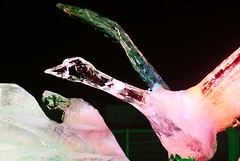
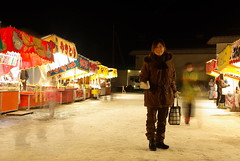
The Abashiri snow festival. From upper left, Moomin characters; Owl family with Ritsuko; an ice goose; and Ritsuko standing very still among the food stalls for a long-exposure shot.
Abashiri Prison Museum
The prison has been a major feature of this town since the late 1800's; in fact the prison is the reason Abashiri became a city rather than stay another poor fishing village. It's easy to see why a prison would be located here; with no roads, few or no people rough terrain and inhospitable climate the chances of escaping must have been remote indeed. The old prison was finally decommissioned some years ago and replaced with a modern maximum-security facility, but some of the older buildings were moved to a nearby area to form an open-air prison museum.
This museum was one of the highlights of this trip. It's fairly large, with buildings from every era of the prison scattered about on a pleasant wooded hillside. Seeing the sometimes unheated cells in winter really brings home just what a hellish existence was offered to the inmates at one time, and indeed, many prisoners died from disease, exposure or malnutrition.
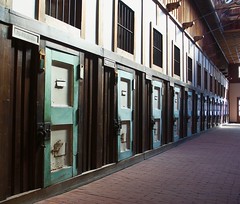
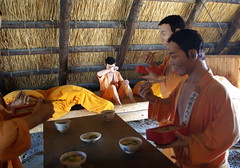
A cell block, and a prison hut as it looked at the start of the prison. More images at my prison photoset
The second night was spent in a standard "business hotel" next to the station; the prison made itself known here again with prominent signs forbidding any guests with tattoos or cut fingers from using the baths. And in the morning we left Abashiri for Akan national park.

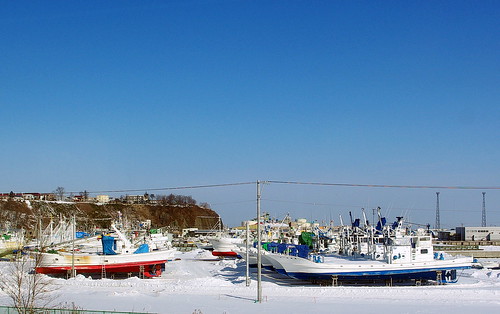
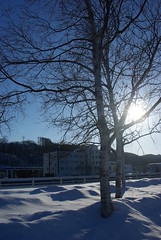

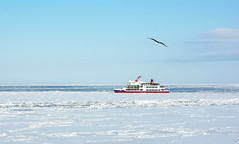

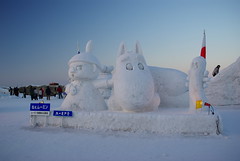
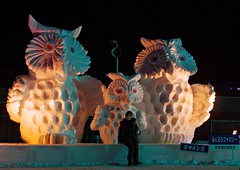

Hello! I was wondering how I can book for the Aurora icebreaker if I am currently living overseas? :)
ReplyDeletethanks!
Here's the website in English: http://www.ms-aurora.com/e_index.html
ReplyDeleteJust be aware that actually getting to see ice floes or pack ice is not guaranteed. The ice has been disappearing from this area overa number of years; we were lucky to catch the ice when we went there.
thanks very much!
ReplyDeleteHi , can I know the name of the ryokan that you stayed in opposite the port ? and is it easy to get there from the JR station ? I am planning to go in feb 09. Thanks
ReplyDeleteIt's Abashiri Seaside House. It can be booked through tourist offices I believe. If you do, the crab dinner really is very, very good.
ReplyDeleteIt's not really close to the station. Basically, the station is up towards the mountain side while this is on a cliff overlooking the ocean. The easiest way to get there if you have luggage is probably to take a taxi. We got there with the airport bus which stops in the general area, then walked the rest of the way.